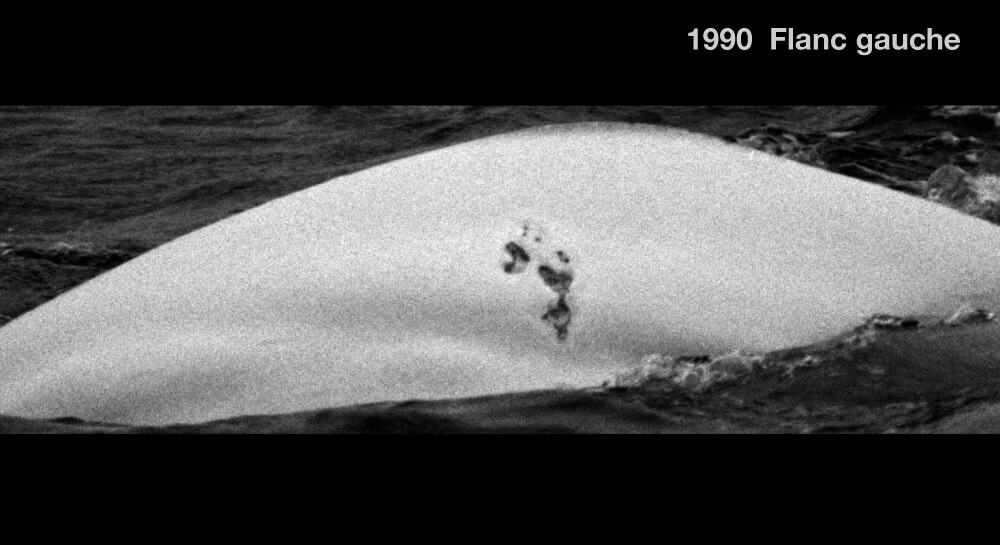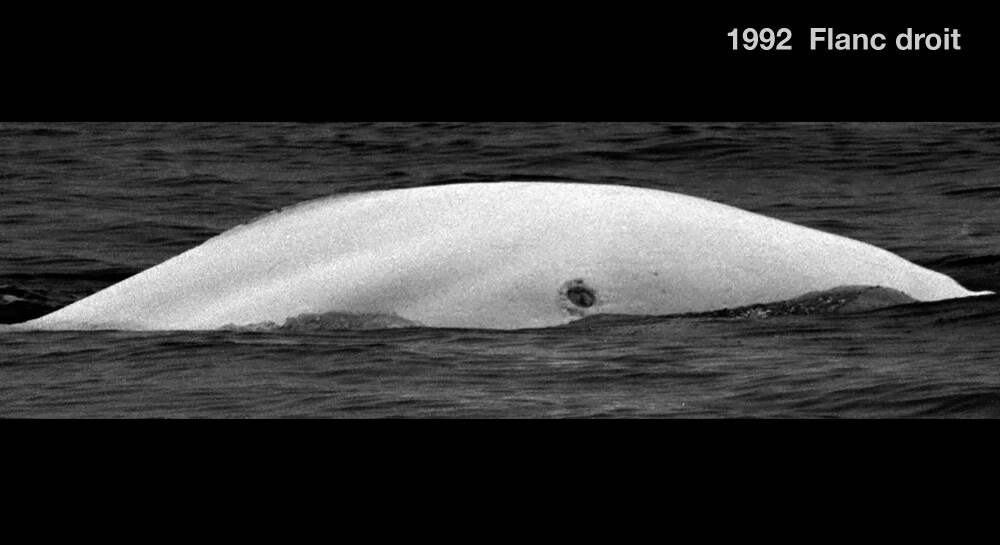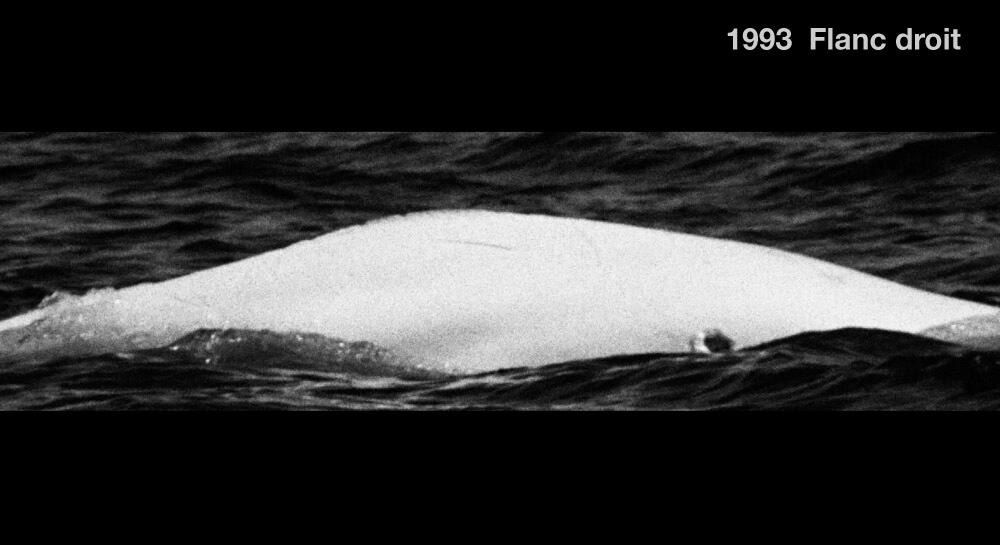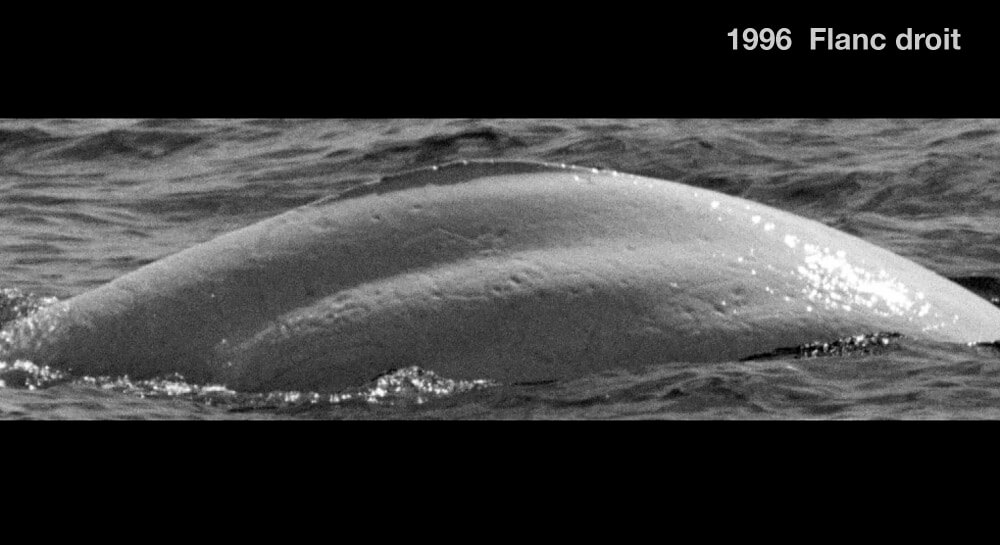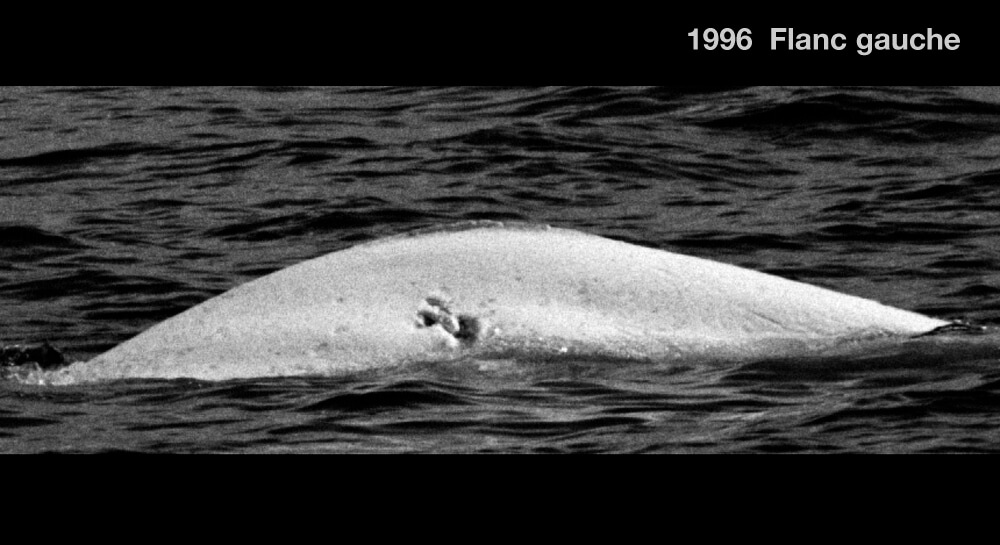Tesna
Beluga


Adopted by students and employees of Ste-Foy CEGEP
-
ID number
DL0070
-
Sex
Male
-
Year of birth
Before 1961
-
Known Since
1977
Distinctive traits
The combination of the multiple scars in the middle of his left flank is a good way to identify Tesna. The various gashes in his dorsal crest and the deep, circular scar down his right flank are also foolproof.
Life history
First observed in 1977, Tesna was completely white. He would therefore have been born before 1961.
His large size, habits and social affiliations clearly indicate that Tesna is a male. He is part of the network of males that frequent the fjord and its mouth.
Tesna is one of the belugas frequently encountered in the Saguenay Fjord and its mouth. Groups of belugas often “ascend” the fjord on the rising tide and, conversely, head for the mouth on the ebbing tide. They use the currents to move around, saving energy in the process.
Regularly seen with...
Observations history in the Estuary
Years in which the animal was not observed Years in which the animal was observed
Latest news
Tesna is spotted in the Alouettes flats area. He is part of a herd of around 30 belugas, including adults, calves and a newborn calf. What’s more, Tesna is in the company of belugas well known to the research team : Griffon, Slash, Twik, Virgule and DL0111 are all present. Later in the morning, Tesna and Twik are a little apart from the group, accompanied by young grays. The researchers note that Tesna’s peduncle appears to be deformed, but his movements are normal.
Tesna was last seen over twenty years ago. Is he dead? Has he remained invisible to the researcher’s eye all this time? One thing’s for sure, his story remains a valuable source of information that helps us to better understand this fragile population.
Sponsor
Students and employees of Ste-Foy CEGEP adopted Tesna (1989).

